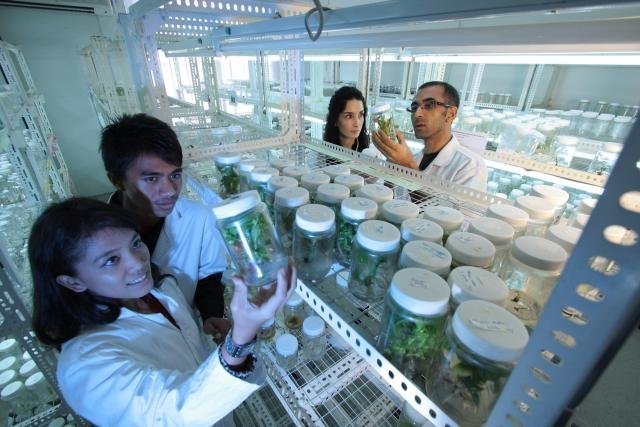The climate crisis is no longer a distant threat or an issue relegated to the future. It is happening now, with unprecedented weather patterns, rising sea levels, and shifting ecosystems already altering life as we know it. From the Arctic to the tropics, from small island nations to massive urban centers, the impacts of climate change are being felt across the globe. And, according to scientists, the situation is only set to worsen unless immediate and significant actions are taken.
In recent years, a growing body of research has revealed the devastating consequences of unchecked climate change. From the collapse of biodiversity to the intensification of natural disasters, the urgency to act has never been clearer. This post will explore the latest scientific warnings about the escalating climate crisis, the potential consequences if global temperatures continue to rise, and the steps that can be taken to mitigate these effects.
1. The Latest Scientific Warnings: A Stark Outlook
A recent series of reports from the Intergovernmental Panel on Climate Change (IPCC), the World Meteorological Organization (WMO), and other scientific bodies paint a grim picture of the future. The consensus among experts is clear: if we do not act decisively, the planet is on track for irreversible damage.
Global Temperature Rise: A Threshold We Cannot Afford to Cross
The Paris Agreement, signed in 2015, set a target to limit global temperature rise to below 2°C above pre-industrial levels, with an aspirational goal of 1.5°C. However, the latest data shows that we are rapidly approaching this critical threshold. In fact, the world is on course to exceed 1.5°C by as early as 2030 unless immediate action is taken to reduce greenhouse gas emissions.
- Current Trajectory: Global temperatures have already risen by approximately 1.1°C above pre-industrial levels, with severe consequences in many regions, including record-breaking heatwaves, more intense storms, and wildfires. According to the IPCC’s 2021 report, the 1.5°C threshold could be crossed even if all nations meet their current climate pledges.
- The 2°C Threshold: Crossing 2°C could have catastrophic impacts on ecosystems, agriculture, and human societies. The effects of this warming would include extreme weather events, food and water shortages, and widespread displacement due to rising sea levels.
Loss of Ice and Rising Sea Levels
One of the most visible and alarming consequences of climate change is the melting of polar ice and glaciers. Scientists have warned that we are on the brink of losing much of the Arctic sea ice, and glaciers around the world are retreating at an accelerated rate.
- Rising Sea Levels: As ice melts, sea levels rise, threatening low-lying coastal areas and small island nations. The World Bank estimates that up to 200 million people could be displaced by rising sea levels by 2050, and up to 1 billion could be affected by the end of the century. Cities like New York, Miami, Venice, and Dhaka are already facing severe flooding risks.
- The Arctic Melt: The Arctic is warming at roughly three times the global average, a phenomenon known as Arctic amplification. This has led to the rapid thawing of permafrost, which releases methane—a potent greenhouse gas—into the atmosphere, further accelerating global warming.
Extreme Weather Events: More Frequent and More Severe
In recent years, extreme weather events like hurricanes, wildfires, droughts, and heatwaves have become more frequent and more severe. According to the WMO, 2020 was one of the hottest years on record, and the trend of increasing global temperatures is expected to continue.
- Heatwaves: Cities across the globe are experiencing record-breaking heat, with temperature extremes that strain power grids, lead to crop failures, and put vulnerable populations at risk. In 2021, Canada’s Lytton set a new national record of 49.6°C (121.3°F), making it the hottest temperature ever recorded in the country.
- Wildfires: Countries like the United States, Australia, and Greece have faced catastrophic wildfires fueled by extreme heat and dry conditions. These fires not only cause widespread destruction but also contribute to air pollution, affecting the health of millions of people.
- Hurricanes and Cyclones: The Atlantic hurricane season in 2020 was the most active on record, with 30 named storms, including 13 hurricanes. The intensity and frequency of tropical storms are increasing, due to rising ocean temperatures that fuel these systems.
Biodiversity Loss: Extinction on the Horizon
Climate change is not just about extreme weather; it’s also about the survival of species that are unable to adapt to the rapidly changing conditions. The loss of biodiversity has profound consequences for ecosystems, agriculture, and human health.
- Habitat Destruction: Rising temperatures and changing precipitation patterns are disrupting habitats, causing species to move or face extinction. Coral reefs, for example, are facing mass bleaching events as ocean temperatures rise, threatening marine biodiversity.
- Endangered Species: Species like the polar bear, the Amur leopard, and the cheetah are at heightened risk of extinction due to habitat loss, changing prey availability, and temperature extremes. The World Wildlife Fund (WWF) warns that up to one million species could be driven to extinction within decades if current trends continue.
Food and Water Security: A Global Challenge
The changing climate is also taking a toll on agriculture, threatening food security around the world. Extreme weather events, shifting growing seasons, and rising temperatures are already affecting crop yields, while changing rainfall patterns are depleting water supplies.
- Crop Failures: Droughts, heatwaves, and floods are reducing crop yields, particularly in vulnerable regions like sub-Saharan Africa, Southeast Asia, and the Middle East. This will lead to higher food prices and increased hunger in some of the world’s poorest regions.
- Water Scarcity: Many regions that rely on melting glaciers for freshwater supply, including parts of South Asia and South America, will face increasing water scarcity as glaciers disappear. Groundwater supplies are also under threat due to changing precipitation patterns and over-extraction.
2. The Path Forward: What Needs to Be Done
The window of opportunity to avoid the worst effects of climate change is rapidly closing, but there is still hope. Scientists and climate experts agree that strong, immediate, and coordinated action can still make a significant difference. The following steps are critical to mitigating the impacts of the climate crisis:
A Rapid Transition to Renewable Energy
The burning of fossil fuels is the primary driver of greenhouse gas emissions, which are causing global temperatures to rise. Transitioning to renewable energy sources such as wind, solar, and hydroelectric power is essential for reducing emissions and combating climate change.
- Global Investment: Governments must invest heavily in renewable energy infrastructure and incentivize the adoption of clean technologies. In 2023, global renewable energy capacity reached an all-time high, but much more investment is needed to meet global climate goals.
- Phasing Out Fossil Fuels: There is a growing call for the phase-out of coal, oil, and natural gas, as well as the reduction of subsidies for fossil fuel industries. The International Energy Agency (IEA) has stated that to reach net-zero emissions by 2050, we must stop new fossil fuel exploration and focus on sustainable energy.
Carbon Pricing and Climate Policies
Governments around the world must implement policies that encourage emission reductions and penalize pollution. Carbon pricing mechanisms, such as carbon taxes or cap-and-trade systems, create financial incentives for businesses and consumers to reduce their carbon footprint.
- Global Cooperation: While some countries are making progress with carbon pricing and emissions regulations, more ambitious global agreements are needed. The United Nations Climate Change Conference (COP28), held in late 2023, emphasized the need for stronger commitments and accountability from both developed and developing nations.
Conservation and Reforestation
Protecting and restoring natural ecosystems is a critical part of the climate solution. Forests, wetlands, and other ecosystems act as carbon sinks, absorbing carbon dioxide from the atmosphere and mitigating the impacts of climate change.
- Reforestation: Large-scale reforestation efforts can help restore damaged ecosystems and sequester carbon. The UN’s Decade on Ecosystem Restoration is aiming to restore 350 million hectares of degraded land by 2030, a goal that could significantly contribute to global carbon reduction efforts.
- Conservation of Biodiversity: Ensuring the protection of key ecosystems such as coral reefs, wetlands, and rainforests is vital for maintaining biodiversity and providing resilience against climate impacts.
Adaptation and Resilience Building
As the climate crisis intensifies, adaptation strategies are necessary to help communities cope with its inevitable effects. This includes building infrastructure that can withstand extreme weather events, improving water management, and supporting agricultural systems that are resilient to changing climates.
- Climate-Resilient Infrastructure: Cities and coastal communities need to invest in infrastructure that can withstand floods, hurricanes, and heatwaves, such as flood barriers, green roofs, and climate-resilient buildings.
- Disaster Preparedness: Governments and organizations must improve disaster preparedness and response systems, ensuring that vulnerable populations are protected from the impacts of extreme weather events.
3. The Need for Urgent Action
The science is clear: the climate crisis is escalating, and the window for preventing the worst impacts is rapidly closing. If we continue on our current trajectory, the consequences will be catastrophic, with far-reaching impacts on ecosystems, economies, and societies worldwide.
However, there is still hope.
Immediate and bold action—driven by international cooperation, sustainable policies, and a commitment to reducing greenhouse gas emissions—can prevent the worst outcomes of climate change. The time to act is now, and the future of our planet depends on the decisions we make today.
The climate crisis is not just a challenge for governments and businesses; it is a challenge for everyone. Every individual can contribute by adopting sustainable practices, advocating for climate action, and holding leaders accountable. It’s time to take collective responsibility and fight for a livable future.




